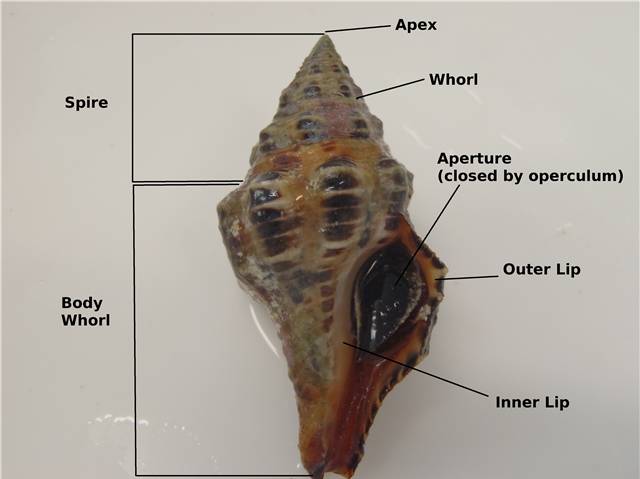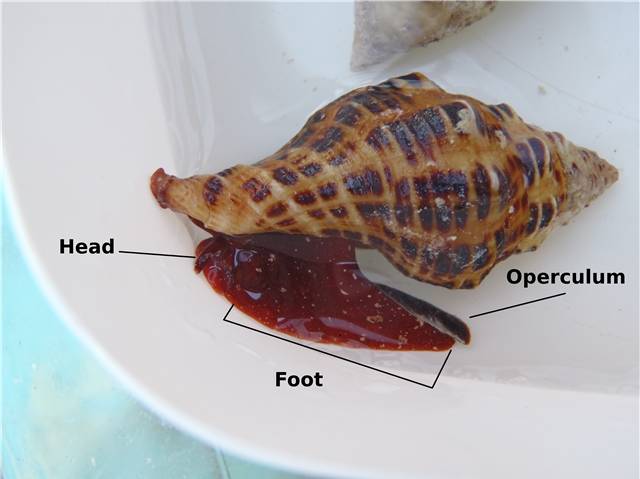Overview
Brief Summary
Distribution
Physical Description
Size
Identification Resources
Ecology
Local Distribution and Habitats
Life History & Behaviour
Behaviour
Reproduction and Development
Evolution & Systematics
Systematics or Phylogenetics
Morphology and Physiology
External Morphology
Internal Anatomy
Conservation
Trends and Threats
References & More Information
Bibliographies
Search the Web
Names & Taxonomy
Synonyms | External Morphology
Shell Morphology
The molluscan shell is made by calcareous material secreted from the mantle epithelium (Ruppert et al. 2004).
The mantle epithelium keeps on secreting this material throughout the life of a mollusc to ensure that the shell grows along with the body. The gastropod shells derived from that of the monoplacophorans, which were flat, low, and symmetrical shells unlike the shells observed in the L. polygonus. The shell was coiled through evolution, with an increase in height and a decrease in the aperture size to allow the gastropods to retreat inside the shell.
Image 1 is a picture of L. polygonus with labels on the different parts of the shell. The apex is the upper most tip of the shell, and the coils around the central axis of the shell (known as columella) are called whorls. The aperture is the large opening of the shell, providing a hole where the foot and head can protrude or retract from. The outer edge of the aperture is termed the outer lip, and the inner edge is termed the inner lip. The biggest and most basal whorl providing space for most of the body is called the body whorl.The remaining smaller whorls and the apex together are termed the spire.

Image 1. Photo of Latirus polygonus with labels indicating different parts of the shell.
As seen in Image 1, the operculum is the horny disc on the foot of most gastropods that functions as a lid to the aperture. In Image 2, the body is outside the shell and the head, foot, and operculum is visible. The foot is almost entirely muscle mass, with connective tissues as well that create the broad creeping sole used for locomotion. The foot is composed of two types of muscles; the columellar muscle composing the internal part, and the tarsos muscle composing the outer regions of the foot.

Image 2. Photo of the Latirus polygonus with labels indicating the exposed body parts.
|
|